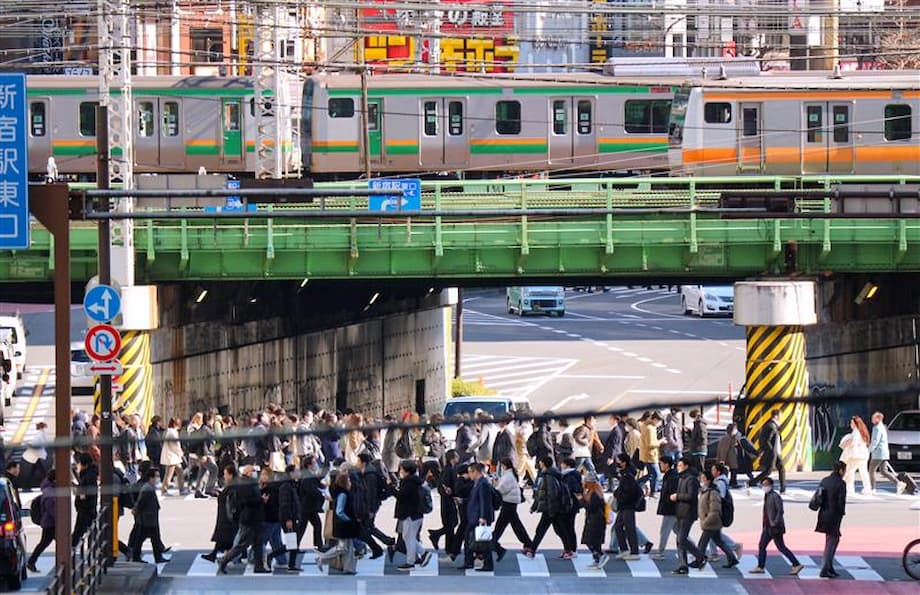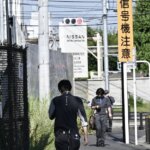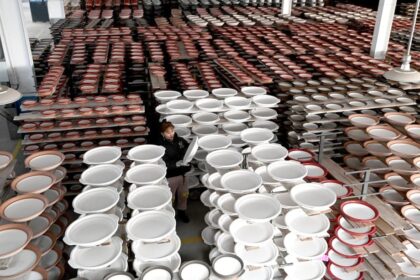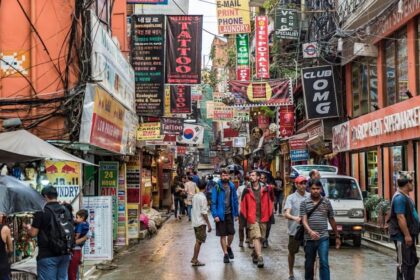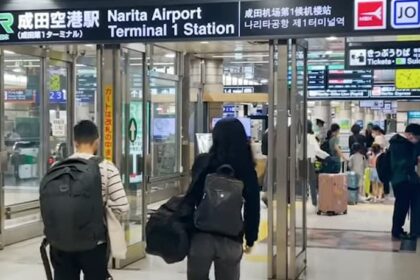Tokyo’s Train Congestion Hits New Highs
Japan’s capital, long renowned for its efficient and punctual rail network, is once again facing a surge in train congestion. According to the latest government data, morning rush-hour trains on certain Tokyo lines are now running more than 70 percent over capacity, marking a sharp increase in crowded conditions for urban commuters in 2024. The Ministry of Land, Infrastructure, Transport and Tourism (MLIT) reports that the most crowded section, the Nippori-Toneri Liner in Arakawa Ward, reached an average congestion rate of 177 percent during peak hours. This means that for every 100 seats or standing spaces, there were 177 passengers packed into the carriage.
Between 7:30 a.m. and 8:30 a.m., the Nippori-Toneri Liner carried 8,664 passengers in carriages designed for just 4,887. Other lines, such as the Tokyo Metro Hibiya Line and the JR Saikyo Line, also reported congestion rates exceeding 160 percent. These figures highlight a return to the intense, shoulder-to-shoulder commutes that have long been a hallmark of Tokyo’s urban life.
What Do Congestion Rates Mean?
Congestion rates are calculated by comparing the number of passengers to the train’s official capacity. A 100 percent rate means all seats and standing spaces are filled comfortably. At 150 percent, passengers are close but not touching. By 180 percent, shoulders are pressed together and movement is restricted, especially near the doors. At 200 percent, passengers are packed so tightly that movement is nearly impossible.
Until recently, Japan’s train congestion was famously measured by whether a passenger could read a newspaper or magazine while standing. However, in 2024, the MLIT updated its standards, dropping the outdated reading-based metrics in favor of more practical descriptions of crowding. The new system reflects the realities of modern commuting, where digital devices have replaced newspapers and personal space is at a premium.
Why Is Congestion Rising Again?
The sharp increase in congestion comes after a brief respite during the COVID-19 pandemic, when remote work and travel restrictions led to emptier trains. In fiscal 2023, Tokyo’s average morning rush-hour congestion rate jumped to 136 percent, up 13 points from the previous year. Osaka and Nagoya also saw increases, though Tokyo remains the most crowded by far.
While these rates are still below the pre-pandemic highs—when some lines approached 200 percent congestion—the trend is unmistakable: more people are returning to the office, and telecommuting is on the decline. Major private railways carried 9.34 billion passengers in 2023, surpassing even the mid-2000s levels. The return to packed trains reflects both economic recovery and a cultural shift back toward in-person work.
Experts point to several factors driving this resurgence:
- Decline in remote work: As pandemic restrictions eased, companies began calling employees back to the office, reversing the telecommuting boom.
- Population concentration: Tokyo’s role as Japan’s economic and administrative center continues to draw workers from across the country, intensifying rush-hour demand.
- Tourism rebound: A record 36.8 million foreign visitors arrived in Japan in 2024, many of them using Tokyo’s trains to reach hotels and attractions.
Tourism’s Impact: Luggage and Overcrowding
The influx of tourists has added a new layer to the congestion problem. Many visitors, unfamiliar with local customs and carrying large suitcases, find themselves squeezed onto already packed trains. This has led to frustration among both locals and tourists, as well as logistical challenges for rail operators.
To address these issues, companies like Japan Airlines have introduced same-day luggage delivery services, allowing travelers to send their bags directly from the airport to their hotel. Tokyo Metro and other railways have expanded luggage storage and delivery options, aiming to reduce the number of bulky suitcases on commuter trains. These services not only ease congestion but also improve the travel experience for visitors and residents alike.
Inside the Rush Hour: What Commuters Face
For many Tokyoites, the daily commute is a test of patience and endurance. The busiest times are between 7:30 a.m. and 9:30 a.m., with peak congestion around 8 a.m. In the evening, crowds surge again from 5 p.m. to 7:30 p.m. Stations like Shinjuku, Shibuya, Ikebukuro, and Tokyo are among the world’s busiest, each handling millions of passengers daily.
On the most crowded lines, passengers are often pressed so tightly that movement is impossible. Station staff, known as oshiya or “pushers,” are sometimes deployed to help cram people into carriages. While this system keeps trains running on schedule, it can be overwhelming for newcomers and exhausting for regular commuters.
Annoyances and Etiquette: The Human Side of Congestion
As trains become more crowded, minor annoyances can quickly escalate. A 2024 survey by the Japan Private Railway Association found that “coughing and sneezing without consideration for others” was the most annoying behavior on trains, reflecting lingering concerns about infectious diseases. Other top complaints included improper seating, noisy conversations, and poor boarding manners.
Interestingly, the survey also asked about foreign tourists’ behavior for the first time. Respondents cited noisy conversations and the way luggage is handled as particular irritants. These findings highlight the cultural and practical challenges of managing congestion in a city that welcomes millions of visitors each year.
How Are Authorities and Companies Responding?
Recognizing the need for both immediate relief and long-term solutions, Japanese authorities and private companies are experimenting with a range of measures:
- Luggage delivery and storage: Services like JAL’s “Baggage-Free” and Tokyo Metro’s Metlocker Plus allow travelers to send their bags directly to hotels, freeing up space on trains.
- Technological innovation: In January 2025, the Keisei Skyliner will introduce an AI facial recognition boarding system, streamlining ticketing and reducing bottlenecks at busy stations.
- Network expansion: Continued investment in rail infrastructure has not only increased capacity but also delivered environmental benefits. A recent study found that Tokyo’s railway expansion over 25 years significantly reduced air pollution and improved public health.
- Staggered commuting: Some companies encourage employees to travel outside peak hours, though the long-term effectiveness of this approach remains uncertain.
Tips for Navigating Tokyo’s Crowded Trains
For those who must brave the rush hour, a few strategies can make the journey more bearable:
- Avoid peak times if possible, especially between 8 a.m. and 9 a.m. and 6 p.m. to 7 p.m.
- Use less crowded lines or smaller stations to bypass the busiest transfer points.
- Board the first or last train cars, which are often less packed than those in the middle.
- Consider alternative transport, such as taxis or chauffeured rides, for greater comfort and flexibility.
For tourists, taking advantage of luggage delivery services and planning routes in advance can help avoid the worst of the crowds. For locals, the daily crush is often seen as an unavoidable part of city life, but awareness of etiquette and patience remain essential for a smoother commute.
Seasonal Spikes and the Future of Commuting
While daily congestion is a persistent challenge, certain times of year see even greater demand. During the New Year holidays, for example, seat reservations on JR trains and Shinkansen lines soared to record levels in 2024, with some routes fully booked days in advance. These seasonal spikes put additional strain on the network and highlight the need for flexible, scalable solutions.
Looking ahead, Japan’s commitment to rail innovation remains strong. The country’s high-speed Shinkansen network, which celebrated its 60th anniversary in 2024, continues to set global standards for efficiency and reliability. New technologies, such as maglev trains and AI-powered ticketing, promise to further enhance capacity and passenger experience.
However, experts caution that infrastructure alone cannot solve the problem. As long as economic activity and population remain concentrated in Tokyo, congestion will remain a fact of life. Some suggest that regional cities like Fukuoka, with their lower density and less crowded commutes, offer a better quality of life for those willing to relocate.
In Summary
- Tokyo’s train congestion surged in 2024, with some lines running over 170 percent of capacity during rush hour.
- Rising ridership is driven by a return to office work, population concentration, and a record influx of tourists.
- Tourist luggage and unfamiliarity with local customs add to the strain on public transport.
- Authorities and companies are responding with luggage delivery services, AI ticketing, and continued rail expansion.
- Commuters face daily challenges, from physical discomfort to etiquette issues, but practical tips and new services offer some relief.
- Seasonal travel peaks and ongoing urbanization suggest congestion will remain a major issue without broader changes in work and lifestyle patterns.


